Search Results for 'Soviet Union'
19 results found.
‘I have never believed more in the spirit of this country.’ says President in maiden speech
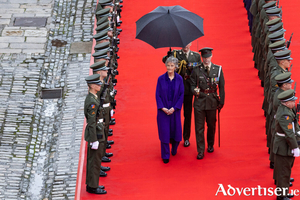
"A Thaoisigh, A Phríomhbhreithimh, Airí, Baill Chomhairle an Stáit, Baill an Oireachtais, Ambasadóirí, Ceannairí Eaglaise, agus dhaoine uaisle ar fad, chomh maith le an Chéad Aire an Tuaiscirt, Michelle O’Neill, agus ceannairí eile ó gach cairn den Tuaisceart.
Our Galway Ukrainians - displaced but not down
Next Monday (February 27) marks the first anniversary of Russia’s invasion of Ukraine.
Arctic naval convoys during World War II and a Kinvara connection
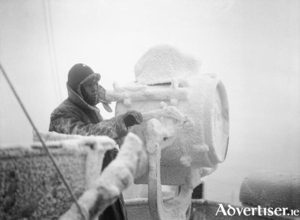
During World War 2, after Hitler had overrun the continent and invaded the Soviet Union, the allies had made a treaty with the Soviet Union to supply them with war supplies. Cargo included tanks, fighter planes, fuel, ammunition, raw materials, and food. The early convoys in particular delivered armoured vehicles and Hawker Hurricanes to make up for shortages in the Soviet Union. The Arctic convoys caused major changes to naval dispositions on both sides, which arguably had a major impact on the course of events in other theatres of war. As a result of early raids by destroyers on German coastal shipping and a Commando raid on the Norway coast, Hitler was led to believe that the British intended to invade Norway again. This, together with the obvious need to stop convoy supplies reaching the Soviet Union, caused him to direct that heavier ships, especially the battleship Tirpitz, be sent to Norway, along with submarines.
Annual Christmas Miscellany 2022
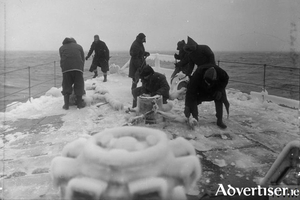
During World War 2, after Hitler had overrun the continent and invaded the Soviet Union, the allies had made a treaty with the Soviet Union to supply them with war supplies. Cargo included tanks, fighter planes, fuel, ammunition, raw materials, and food. The early convoys in particular delivered armoured vehicles and Hawker Hurricanes to make up for shortages in the Soviet Union. The Arctic convoys caused major changes to naval dispositions on both sides, which arguably had a major impact on the course of events in other theatres of war. As a result of early raids by destroyers on German coastal shipping and a Commando raid on the Norway coast, Hitler was led to believe that the British intended to invade Norway again. This, together with the obvious need to stop convoy supplies reaching the Soviet Union, caused him to direct that heavier ships, especially the battleship Tirpitz, be sent to Norway, along with submarines.
A lone figure at Bohermore cemetery
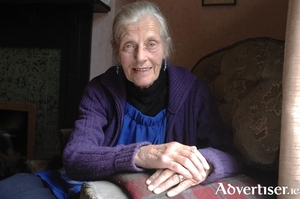
William Joyce recorded his final broadcast on April 30 1945 as the last great battle of the war raged. Russian troops, after a desperate struggle, finally wrenched Berlin from the grip of the Nazis. The once great city was then little more than streets of rubble. In an iconic World War II photograph Soviet troops fly the Soviet flag over the Reichstag May 2 1945.
Shaping the world through travel

Representatives of the pub, restaurant, and hotel trades will come before the Oireachtas Tourism Committee this week to outline the effects of the pandemic on their industries.
Séamus Ó Beirn made his difference as a doctor
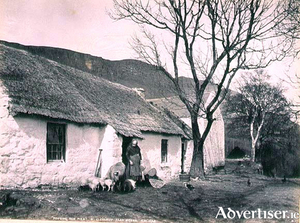
The praise lavished on Dr Séamus Ó Beirn by the Tuam Herald (February 22 1908), for his lectures and lantern slides on the scourge of tuberculosis in Connemara, was justified. The journalist said he is ‘a plain dispensary doctor whose soul is aflame with Christian charity, and the love of his native tongue’.
A writer comes for Christmas 1945
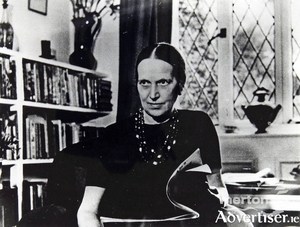
Back in Connemara for Christmas, which she insisted on calling Christ Mass, Ethel Mannin opens the door of her little cottage, located between Roundstone and Clifden, close to Mannin Bay. She has been away for some time. She lights fires in all three rooms, to drive away the musty smell and damp, and soon she is comfortable sitting by the window looking out at the sea, the mountains beyond. She was back to stay until restlessness, or some political challenge, calls her away again.
Why a political revolt by Ireland’s under twenty fives is now a certainty

One recent evening Insider watched the 1967 Jean-Luc Godard film La Chinoise in which a small group of French students sit around their apartment, located in what is described as a “workers’ district”, and engage in theatrical discussions about how they must overthrow the bourgeoise and, in particular, the hierarchal French university system which saw students as passive receivers of knowledge handed down by their god-like professors, rather than participants in a dialectical exchange in which both students and teachers learn from each other and grow as a result. No one, with the exception of chairman Mao, is radical enough for most of these students. The French Communist Party which, to draw an Irish parallel, would have been more or less the political equivalent of present day Sinn Féin, is condemned as hopelessly “revisionist”. The Soviet Union, in particular its then president, the now largely forgotten Mr Kosygin, is convicted by the students at their kitchen table discussions of failing to do enough to support the Vietnamese in their war against Lyndon Johnson. And the French working class, with whom said kitchen table debaters absolutely sympathise, are seen as hopelessly passive. In a mix of desperation, madness, and idealism, the students decide to mount a campaign of terrorism, which will involve them doing something they have singularly failed to do for most of the film; getting up from that kitchen table and going outside. They plan to kill the visiting Soviet minister for culture who has been invited by President de Gaulle’s own culture minister, the novelist and decayed Stalinist intellectual Andre Malraux, to open a new wing of the university. After that, they hope to bomb the Sorbonne in the belief that this will spark a revolution. Insider is against blowing up universities. Partly because he knows such actions more often provoke backlash than revolution. But also because Insider happens to teach at a university and coming out in favour of blowing up universities might lead to an awkward email from one’s department head.
Is Galway’s Extinction Rebellion extinct?

Is Galway’s Extinction Rebellion extinct? Has it fallen victim to Covid-19 or is its silence political due to the Greens going into Government?

